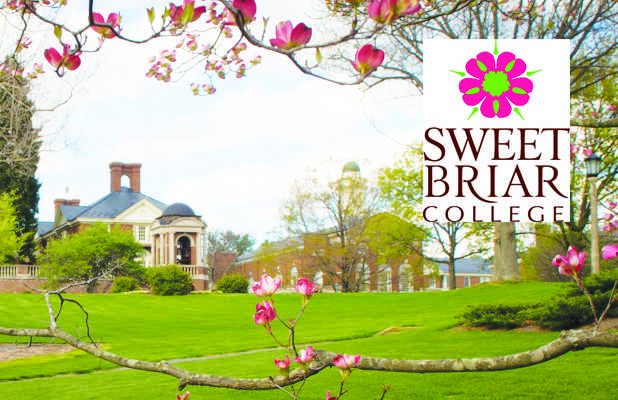Same-sex schools are doomed
Sweet Briar was founded in 1901 as a private women’s college in Lynchburg, VA.
After receiving numerous emails from their admissions officers about applying to the school, I was surprised last week to hear that Sweet Briar College will be closing this August due to financial difficulties.
I cannot help but feel slightly responsible for the downfall of this institution that recently celebrated 114 years in central Virginia.
The unfortunate closing of Sweet Briar University is not the fault of any single person. Rather, every kid who made a custom of deleting their emails is to blame. I was one of these kids – their emails appeared so frequently in my Gmail inbox that I began to consider their outreach invasive.
Now I realize that these emails were desperate efforts to recruit students who would have become their much-needed life blood. Colleges cannot survive without students.
What Sweet Briar should have realized sooner is that students coming out of high school often pick colleges based on the social life they offer.
So what is the biggest drawback about Sweet Briar’s social life? There are only girls on campus. Seeing a man roaming around is rare, which poses a problem for campus diversity.
Diversity is such an omnipresent part of my high school life. If I chose to live in the homogenous community of a same-sex college, I’d probably be blown away by the culture shock.
Colleges should afford students as many opportunities as possible. For a long time same-sex colleges have claimed to foster boys and girls by catering to their different “cognitive and interpersonal styles.”
In a 2011 report by the American Council for CoEducational Schooling (ACCES), social scientists asserted that “sex-segregated education is deeply misguided and often justified by weak, cherry-picked or misconstrued scientific claims rather than by valid evidence.”
The report goes on to explain that a single-sex education can actually be harmful because it limits the chances for boys and girls to work together. Interacting solely with members of the same gender tends to reinforce the sex stereotypes that are already so prevalent in our society.
Again, most people would agree that colleges should afford students as many opportunities as possible. If a same-sex education is known to limit students and reinforce narrow-minded stereotypes, is it any surprise that institutions like Sweet Briar are going under?
When interviewing AHS students about what they are looking for in a college, the most popular answer was diversity. By going to a single-sex school, kids are cut off from half the human population – they’re missing out on half of what life has to offer.
Another reason same-sex schools are slowly becoming obsolete is because dating opportunities on their campuses, for the majority of the populace, are slim to none.
I have heard women joke about how they went to college to earn their “MRS” degree. In other words, they met their spouse in college and became a “Missus” after getting hitched.
Women who go to a same-sex school are not afforded the same opportunity. I would not advise picking a college based on its dating culture, but I wonder if any students at same-sex schools ever regretted their decision after realizing they would not be finding someone of the opposite sex to marry.
In addition to their limited dating opportunities, many same-sex colleges are small liberal arts schools in remote places. For most students these are not attractive descriptors, since college tend to gravitate toward the cultural opportunities that big cities offer: international restaurants, movie theaters and dance clubs, among other things.
Small liberal arts colleges also have the drawback of being more expensive than the vastly larger public schools that they compete with.
The National Center for Education Statistics reports that the average price for tuition, room and board at a private college is $37,800. If that number scares you, don’t worry: public colleges would charge you less than half of that for the same services, with the national average being $14,300.
With the closing of Sweet Briar; Mary Baldwin and Hollins University are the only two women’s colleges remaining in VA. Our state used to be a haven for women seeking to attend a single-sex school. At one point VA had over 20 universities just for women, and young girls from all over the nation would be sent by their families to attend them.
I’m not completely disparaging same-sex schools. They served their purpose when society was rather sexist and women were lucky to receive any form of higher education. If I had to choose between attending a single-sex school or no school at all, my decision would be clear.
If I lived in the 1940s and Sweet Briar was bombarding my mailbox with letters, it could have even been my top choice. Times have changed, and I can say from experience that one of the best parts of a modern day education is diversity in all forms. I say variety is the spice of life.
What if my father, brother and uncles had never been in my life? Or what if all those important men had been women? I would be a completely different person, not the well-rounded, open-minded and empathetic person that my various family members and friends have influenced me to become.
As the closing of Sweet Briar indicates, same-sex colleges are slowly becoming obsolete. If we are going to become capable leaders of a changing world, we need to leave same-sex schools behind in favor of socially diverse institutions of higher learning.

Sarah Metzel is the current Editorals Editor of The A-Blast. She joined the staff sophomore year as a staff writer.
Metzel was accepted into the Young...





